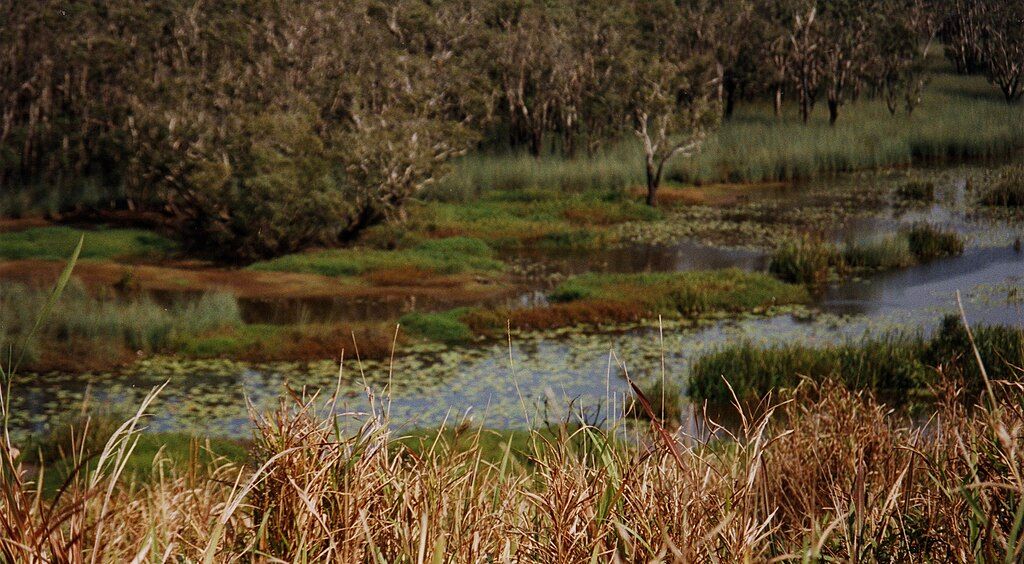Home/Curriculum resources/The Swamp/Activity 1 - The Swamp
Learning Area:
The Arts
Year levels:
Level 9, Level 10
Suggested timing:
30 minutes
Required resources:
AV equipment

Activity 1 - The Swamp
This activity is a part of the The Swamp resource.
Eubenangee Swamp National Park Australia. Gimuy country. Source: Wikimedia Commons. License: CC BY-SA 2.0.
Students will watch the film The Swamp as a class and engage in a discussion exploring its genre, deviations from traditional documentary format, its impact on Aboriginal and Torres Strait Islander storytelling, challenges faced by the Yolngu people, and the film's key messages for both Yolngu and non-Yolngu audiences. They will also analyse key elements such as colour, sound, narration style, and language to understand their role in conveying meaning and engaging the audience.
Step by step guide
Step 1: Watch the film The Swamp as a class.
Step 2: Discuss the following inquiry-based questions as a class:
What genre would you put this film into? Does it follow similar conventions to other films in this genre? E.g. Documentary.
How does the film deviate from the traditional documentary format to incorporate storytelling? How would the film be different if the Yolngu weren’t telling their own story, but someone interviewed them or told their story for them?
How does film deviate from traditional Aboriginal and Torres Strait Islander storytelling and what does this mean for audiences?
What challenges are the Yolngu people facing?
What did the narrator say about government policy and the management of crocodiles? How did that challenge social perceptions of crocodiles and the role of government?
Does the film challenge any social beliefs about Aboriginal and Torres Strait Islander Peoples, or change any of your perspectives?
The film is for Yolngu people, but also for all people all around the world. What do you think the key messages are for non-Yolngu people?
Make a list of the key elements of the film and how they have been used to create meaning, e.g. colour, sound, narration style, language. How do they engage the audience? Does it give you a new perspective in some way?
Related activities within this resources:

Activity 2 - Mapping story places
Students explore the swamp's centrality to Yolngu life, compare it to their own surroundings, discuss challenges to traditional culture, and gain insights into Indigenous life.
Suggested timing:
30 minutes
Required resources:
Laptop/tablet, Internet connection, Goggle Earth

Activity 3 - Telling the story of a place
Students explore a natural environment, observe, create group stories using visual media, and analyse their storytelling choices in a classroom presentation and discussion.
Suggested timing:
One lesson
Required resources:
Filming device, Local natural area